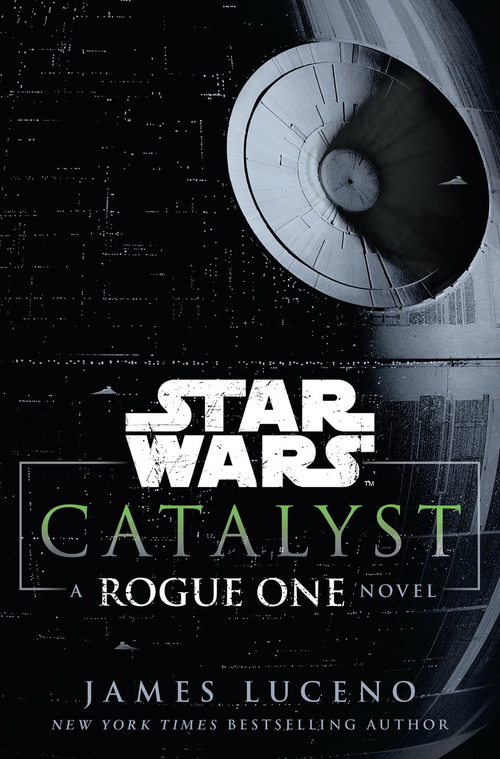 Recently, I reviewed the novel Star Wars Aftermath: Life Debt and was unfortunately underwhelmed. The Aftermath series in general hasn’t impressed me and I’ve started to wonder if the new Star Wars canon would be able to put out something worth recommending. Fortunately, while not without its flaws, I can wholeheartedly say that Star Wars Catalyst by James Luceno is worth picking up.
Recently, I reviewed the novel Star Wars Aftermath: Life Debt and was unfortunately underwhelmed. The Aftermath series in general hasn’t impressed me and I’ve started to wonder if the new Star Wars canon would be able to put out something worth recommending. Fortunately, while not without its flaws, I can wholeheartedly say that Star Wars Catalyst by James Luceno is worth picking up.
I had my doubts going in to Catalyst. As a tie-in novel for Rogue One I was expecting this to basically be a 300-page advertisement trying to convince people to go see Rogue One in theaters. But it’s actually a worthy addition to the Star Wars canon that expands upon the backstories of characters in the film and makes the construction of a superweapon that can destroy planets somewhat grounded.
Set after the events of Episode II Attack of the Clones and ending before Rogue One, Catalyst helps tie up some of the loose end of a few movies. We get a sense of when things took place, how different groups were involved with the Death Star construction and what it was like for everyday people to go through a transition from a republic to an empire.
Catalysts centers on the relationship between Galen Erso and his old classmate Orson Krennic. Erso is the brilliant but antisocial inventor trying to create a cheap and efficient energy source. Krennic is the ambitious officer looking to achieve greatness through the Death Star project. Krennic uses their past history to slowly manipulate Erso into creating the power source for the superweapon. We learn parts of this story in Rogue One but Catalyst shows the nuanced steps that were taken to trick an apolitical scientist into working on a weapon that can destroy planets.

The novel is less about what happens and more about how it happens. You’re not going to read this book and learn of any major revelations or plot twists. But because of this, Catalyst avoids the pitfall that I believe most supplemental media falls into, it doesn’t try to do too much. For example, the Star Wars Clone Wars TV show introduced Ahsoka Tano, Anakin Skywalker’s apprentice who is never mentioned in the main films. Choices like that make the side stories feel less like canon because they introduce characters and concepts that seem to run parallel to the main stories.
My only real complaint is that the third act loses steam. Things get bogged down in a ploy by the Empire to justify the mining of worlds for the kyber crystals needed to power the Death Star. The battle that occurs over one of these planets isn’t very interesting, nor are the characters involved.
 There also comes a point there Galen realizes that he, along with his wife Lyra and young daughter Jyn, need to go on the run and hide from the Empire. This almost feels like an afterthought. They receive help from Saw Gerrera (who once again is shoehorned into a story where he isn’t given much to do) but the stakes never feel that high. Sure, we know that the characters survive because we see them in Rogue One but that doesn’t mean that it’s not worth building some tension into the escape.
There also comes a point there Galen realizes that he, along with his wife Lyra and young daughter Jyn, need to go on the run and hide from the Empire. This almost feels like an afterthought. They receive help from Saw Gerrera (who once again is shoehorned into a story where he isn’t given much to do) but the stakes never feel that high. Sure, we know that the characters survive because we see them in Rogue One but that doesn’t mean that it’s not worth building some tension into the escape.
As I often do, I read this book in the audiobook format. Narrator Johnathan Davis does a solid job in his dramatization which is bolstered by music and sounds from the films. However, I don’t think that you miss out by not getting the audiobook.
So if you are craving more Rogue One content or just want a Star Wars fix, Catalyst wouldn’t be a bad book to pick up.
